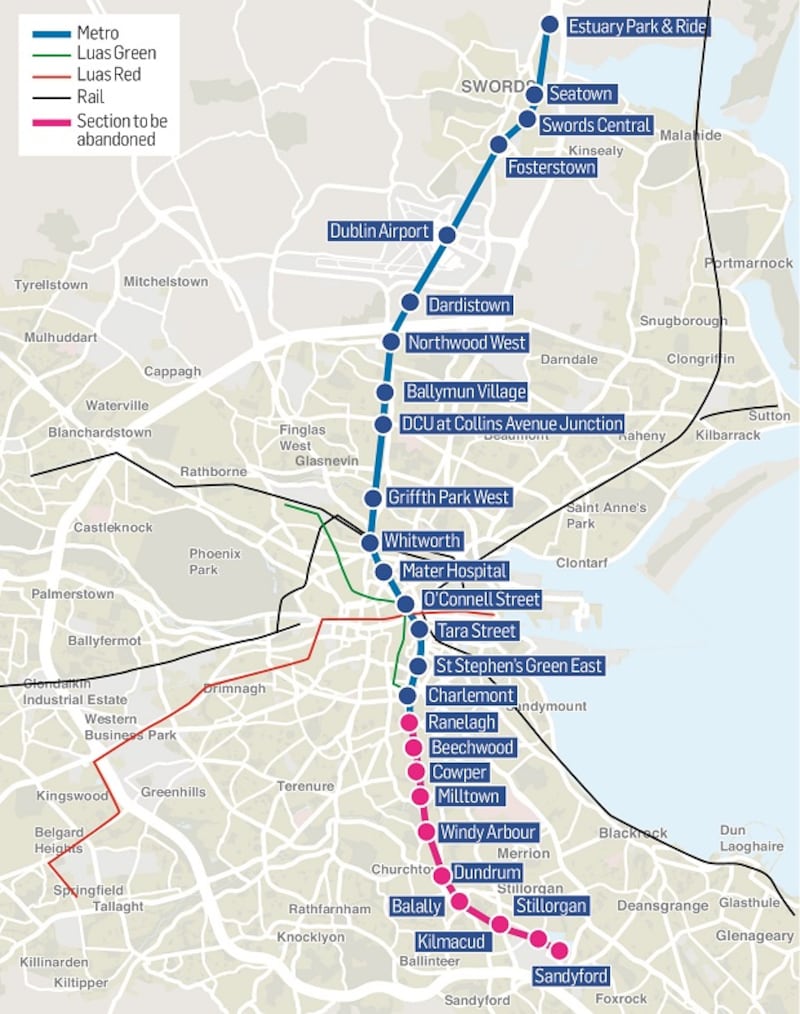1. What exactly is the MetroLink?
It combines the original Metro North project running between Swords and Dublin City, and a southside extension that was to run as far as Sandyford. Transport authorities say the project will deliver a "full north-south high-capacity" route by 2027.
As well as finally providing a rail link between Dublin Airport and the city, it aims to cater to future capacity needs through northside suburbs and south along the route of the existing Luas Green line.
2. But if there is already a Luas Green line, why is it being replaced with a MetroLink?
Capacity. The Luas Green line has some issues with commuters having trouble squeezing on to the trams some mornings. While for now it is a case of waiting a few minutes until the next one arrives, with growing population demands the Luas will reach saturation point. City and transport planners believe a faster, more frequent, bigger rail network that does not need to share road space is the only solution.

3. So why scrap it now?
The question is more likely to be what might replace the southside portion of the MetroLink project. Existing plans have been met with consistent and determined local opposition. The Government has apparently refused to accept any proposal that would effectively cut off the commuter supply route offered by the existing Luas line for between two and four years while work on the Metro project is carried out.
4. What were the locals complaining about?
It all started with a tiny little thoroughfare connecting Dunville Avenue with Beechwood Road that would initially have been closed to accommodate an uninterrupted MetroLink line and replaced with a footbridge. While solutions were proposed to avoid this scenario, local objectors also took umbrage with high-speed trains running through residential neighbourhoods rather than underground. Such concerns were pushed by numerous residents groups with considerable political support.
5. What are the alternatives?
It’s not quite sticking a pin in a map but supporters of the rail project believe the southern segment should simply be moved in another direction. Among the suggestions pitched are that the underground line be continued into other areas of Dublin, possibly to the UCD campus or out along the canal towards Harold’s Cross.
6. What does all this mean for the northside part?
It is not quite clear, although the popular support (and need) for such a service between Dublin Airport and the city centre seems a lot stronger. As issues continued with the southside leg of the line, Paul Reid, chief executive of Fingal County Council, recently teamed up with local TDs to call for the northside element to be delivered separately so as not to undermine progress on the project. This followed news that a planning application for the northside section could be delayed until next year due to ongoing problems on the southside.















